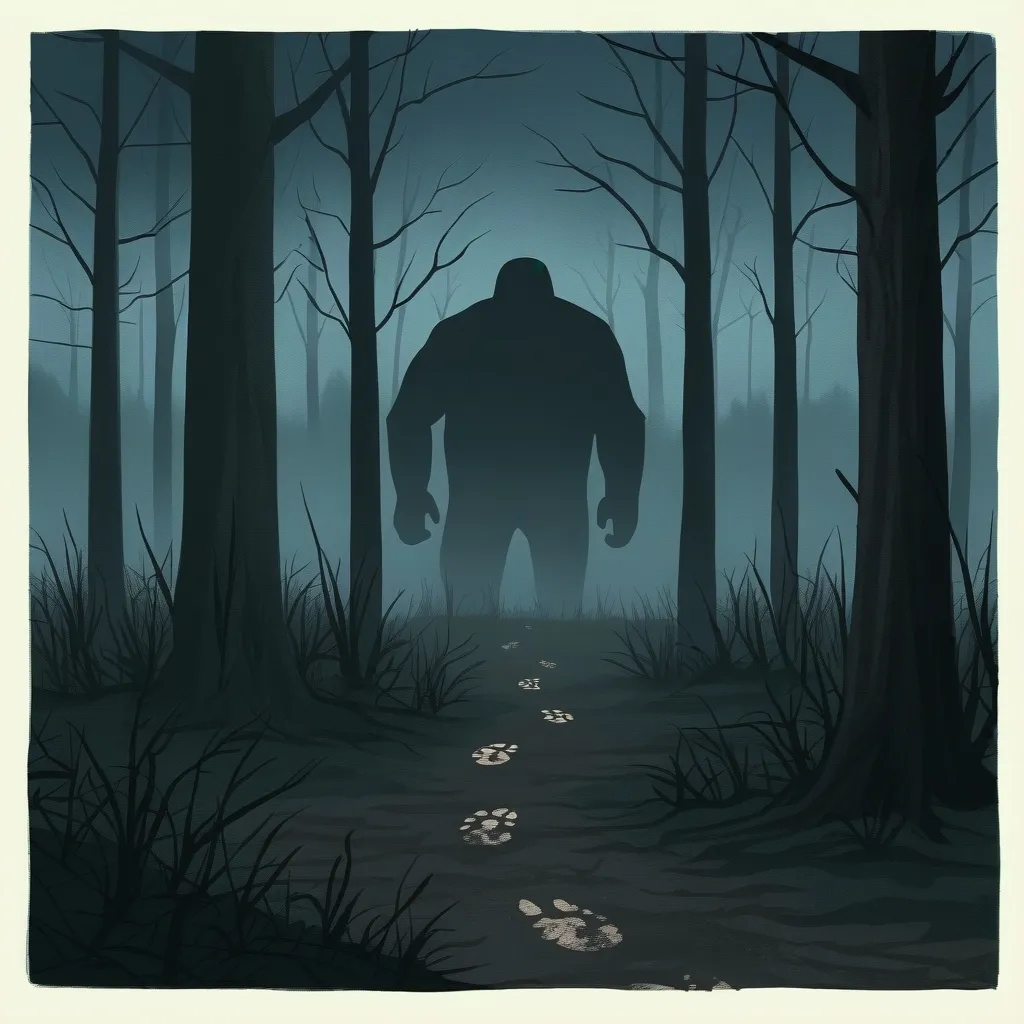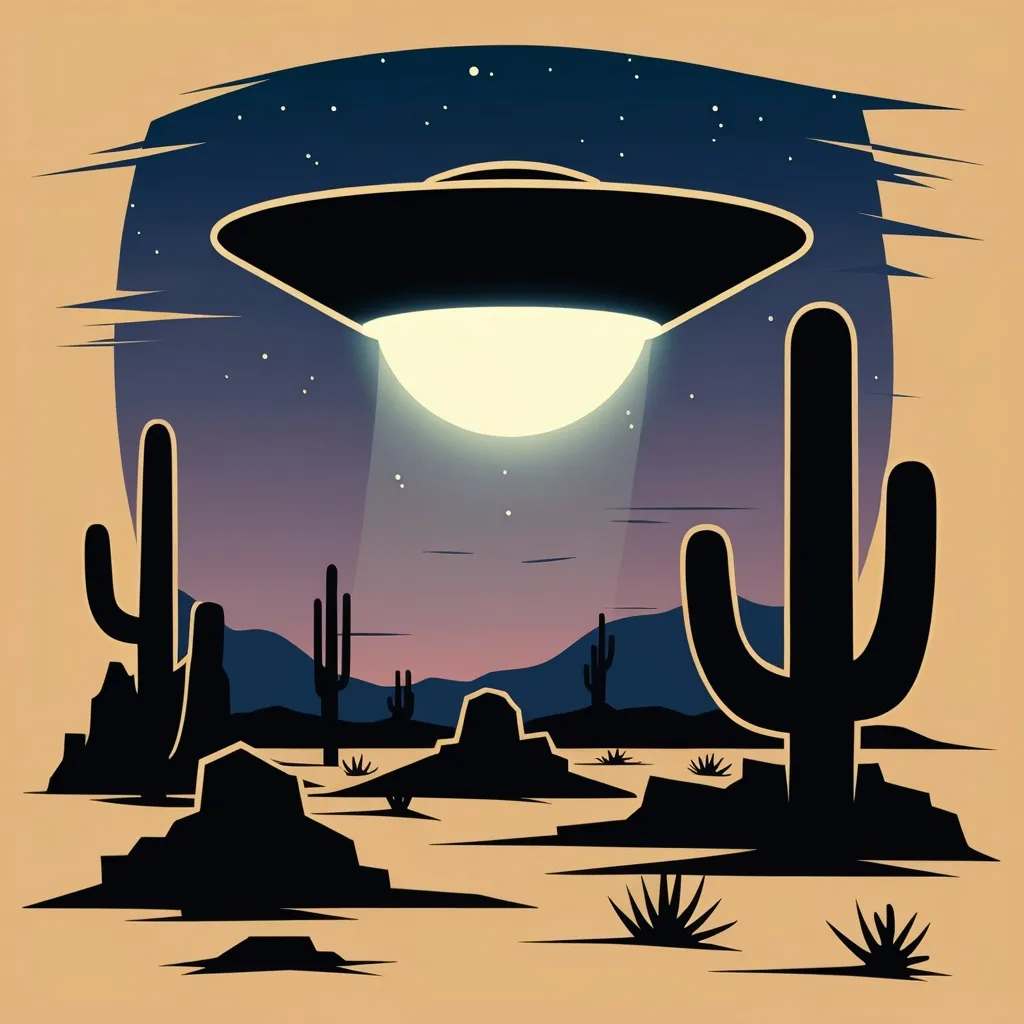Bigfoot: Myth or Reality? The Enduring Mystery of the Elusive Forest Giant
Have you ever wondered what’s lurking in the deep, dark forests of North America? For centuries, people have been captivated by tales of a mysterious, hairy, human-like creature roaming the wilderness. Yep, you guessed it - we’re talking about Bigfoot, aka Sasquatch.
This legendary beast has been the star of countless campfire stories, TV shows, and even a few questionable “documentaries.” But here’s the million-dollar question: Is Bigfoot real, or is it just a bunch of hairy hogwash?
Let’s dive into the wild world of Bigfoot and see if we can separate fact from fiction. Buckle up, folks - it’s gonna be a bumpy ride through the cryptozoological wilderness!
The OG Bigfoot: Native American Legends
Before we had grainy videos and blurry photos, Native American tribes were spinning yarns about giant, hairy forest dwellers. These weren’t just scary stories to keep kids in line - many tribes saw these creatures as powerful spiritual beings.
The Salish people called it Sasquatch, while the Algonquin went with Witiko or Wendigo. These weren’t your average forest critters - they were often described as messengers or warning signs, telling humans to get their act together. Talk about a hairy wake-up call!
When European settlers started poking around the forests, they began reporting their own Bigfoot sightings. Suddenly, everyone and their grandmother had a story about spotting a massive, furry figure in the woods. It was like the world’s hairiest game of “I Spy.”
The Bigfoot Bonanza: Modern-Day Sightings
Fast forward to today, and Bigfoot sightings are still making headlines. Take the recent hubbub in Colorado, where a couple on a scenic train ride claimed to have spotted the elusive beast. Shannon and Stetson Parker (yes, those are their real names) shared photos and videos of what they swear was a tall, furry brown creature doing its best Sasquatch impression.
Cue the internet explosion. Bigfoot believers were over the moon, while skeptics were rolling their eyes so hard they could see their own brains. It was like the dress debate all over again, but hairier.
But hold your horses, Bigfoot fans. Primatologist Mireya Mayor, who’s spent more time than most of us looking for Sasquatch, wasn’t buying it. She pointed out that the video quality was about as clear as mud, making it impossible to tell if we were looking at Bigfoot or just some dude in a really bad fur coat.
Mayor also noted that the creature’s movements were suspiciously human-like. Let’s be real - if you were a mythical forest beast, wouldn’t you have a bit more swagger in your step?
Hoaxes, Pranks, and Hairy Situations
Now, let’s address the 800-pound gorilla in the room (or should we say, the 8-foot Sasquatch in the forest): hoaxes. The Bigfoot world is no stranger to pranks and fake sightings. It’s like Halloween came early, and everyone decided to dress up as a forest monster.
Remember the Minnesota Iceman? In the 1960s, this supposed frozen Bigfoot corpse was carted around the country like a hairy circus attraction. Spoiler alert: it was about as real as a three-dollar bill. Turns out, it was just a latex model created for a traveling sideshow. Talk about a cold case!
And let’s not forget Tom Biscardi, the Bigfoot enthusiast who cried wolf. In 2005, he claimed to have nabbed a live Sasquatch, only to later admit it was all a big, hairy lie. Biscardi tried to blame it on some mystery woman who led him astray. Nice try, Tom, but we’re not buying it. Fool me once, shame on you. Fool me twice, and I’m probably a Bigfoot believer.
Science Says: “Show Me the Hairy Money!”
Now, let’s get serious for a hot minute. From a scientific standpoint, the existence of Bigfoot is about as likely as finding a unicorn in your backyard. Here’s the deal: big animals need lots of space and food to survive. They also need to, you know, reproduce. If Bigfoot were real, we’d have found more than just some questionable footprints by now.
Ecologists and anthropologists (aka, the party poopers of the Bigfoot world) argue that if these creatures existed, we’d have solid evidence by now. We’re talking bones, poop, hair - the whole nine yards. But so far? Nada. Zip. Zilch.
And get this: when scientists have tested supposed “yeti” samples, they’ve turned out to be from boring old regular animals like bears. It’s like ordering a mystery box online and getting socks instead of treasure.
Bigfoot: The Cultural Icon
Despite the lack of hard evidence, Bigfoot has become a bona fide cultural icon. It’s like the Elvis of the cryptozoology world - people just can’t get enough of it.
Bigfoot has starred in more books, movies, and TV shows than you can shake a stick at. It’s become a symbol of the wild, unknown parts of our world. Heck, even the Western Air Defense Sector has adopted Bigfoot as their mascot. Because nothing says “we’re watching the skies” like a mythical forest creature, right?
The Bigfoot Community: More Than Just Hairy Tales
Here’s where things get interesting. For many people, Bigfoot isn’t just about proving its existence - it’s about the journey, the community, and the shared sense of wonder.
Take Claudia Ackley, for example. This dedicated Bigfoot researcher made headlines with her claims of Sasquatch sightings. Even when the authorities debunked her stories, she kept on trucking. Claudia even started a support group for people who claimed to have psychological trauma from Bigfoot encounters. Talk about turning lemons into really hairy lemonade!
The Bigfoot research community is a tight-knit group. They swap stories, share “evidence,” and spend countless hours tromping through the woods looking for signs of their elusive quarry. It’s like bird watching, but with more conspiracy theories and night vision goggles.
The Great Debate: Bigfoot Believers vs. Skeptics
So, where does this leave us? On one side, we have the true believers - folks who are convinced that Bigfoot is out there, just waiting to be discovered. They point to centuries of folklore, countless eyewitness accounts, and the vastness of the wilderness as proof that Sasquatch could be real.
On the other side, we have the skeptics - the party poopers who insist on things like “evidence” and “scientific proof.” They argue that in an age of smartphones and satellite imagery, it’s virtually impossible for a large, unknown primate to remain hidden.
Both sides make some good points, and the debate rages on. It’s like the world’s hairiest game of tug-of-war, and neither side is backing down.
The Enduring Appeal of Bigfoot
So, why does Bigfoot continue to capture our imagination? Maybe it’s our innate desire to believe in something bigger than ourselves. Or perhaps it’s the thrill of the hunt - the idea that there’s still something out there to be discovered.
In a world where it feels like every inch has been mapped and every species cataloged, Bigfoot represents the last frontier of mystery. It’s a reminder that maybe, just maybe, there’s still some magic left in the world.
Plus, let’s be honest - the idea of a giant, hairy forest dweller is just plain cool. It’s like having a really tall, really shy neighbor who never comes to your barbecues.
The Final Word (For Now)
At the end of the day, whether you’re a die-hard Bigfoot believer or a staunch skeptic, there’s no denying the impact this legendary creature has had on our culture. It’s sparked countless expeditions, inspired works of art, and brought people together in the shared pursuit of the unknown.
So, the next time you’re out in the woods and hear a strange noise, take a moment to wonder. Is it just the wind? A bear? Or could it be the elusive Bigfoot, finally ready for its close-up?
One thing’s for sure - as long as there are forests to explore and mysteries to unravel, the legend of Bigfoot will live on. And who knows? Maybe one day, we’ll finally get that clear, indisputable evidence that settles the debate once and for all.
Until then, keep your eyes peeled, your cameras ready, and your sense of wonder intact. After all, in a world full of Bigfoot hunters, it’s the journey that counts - even if the destination turns out to be a guy in a gorilla suit.






